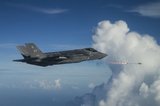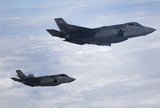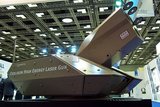AOC 2018: Radios in the spotlight at US Army’s evaluation
As part of its exploration of a new integrated tactical network, the US Army demonstrated the capabilities of several new tactical radios during the recent Network Integration Evaluation (NIE) 18.2.
The event, held from 1-12 November at Fort Bliss, Texas, encompassed a range of soldier-led evaluations designed to further integrate and rapidly progress the US Army’s tactical communications network.
‘About a year ago the army noticed that soldiers were carrying two radios; a data radio, which had certain capabilities but certain limitations, and a voice-focused radio, which has advantages in terms of things like range’, explained LTC Michael Baker, product
Already have an account? Log in
Want to keep reading this article?
More from AOC Annual 2018 News
-
![AOC 2018: Mosaic warfare in the spotlight]()
AOC 2018: Mosaic warfare in the spotlight
Mosaic warfare, a move away from rigid formations and monolithic platforms, will provide long term benefits such as rapid innovation and greater impact, it emerged …
-
![AOC 2018: US Army looks to reinvigorate EW capabilities]()
AOC 2018: US Army looks to reinvigorate EW capabilities
The US Army is undergoing a renaissance after almost two decades of dealing with asymmetric threats, steady periods of budget uncertainty and an increasingly complex …
-
![AOC 2018: US EW advocate fears defence budget cuts]()
AOC 2018: US EW advocate fears defence budget cuts
US EW programmes fared well in recent budget deliberations, but that progress might soon be derailed by potential cuts to the overall defence budget, according …
-
![AOC 2018: New Pentagon team to address EW gaps]()
AOC 2018: New Pentagon team to address EW gaps
The Pentagon is forming a team to identify gaps in US electronic warfare (EW) capabilities and develop recommendations for addressing them, it emerged at the …
-
![AOC 2018: Directed energy solutions for high-tech threats]()
AOC 2018: Directed energy solutions for high-tech threats
Directed energy (DE) weapons, such as high-energy lasers (HEL) and high-power microwaves, are possible solutions to higher technology asymmetric threats. While the latter has been …
-
![AOC 2018: Threats shape EMSO]()
AOC 2018: Threats shape EMSO
The field of Electromagnetic Spectrum Operations (EMSO) has become more complex in the past 20 years with changing threats which pilots and others need to …



























